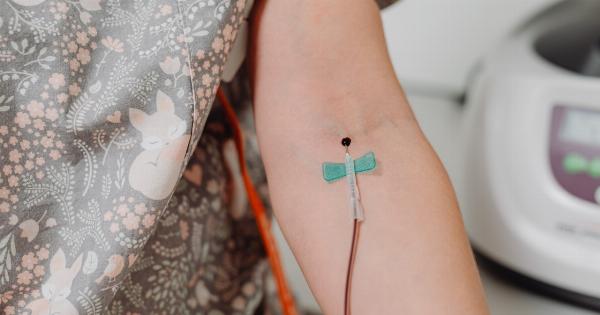Chronic venous insufficiency, or CVI, is a condition that affects the veins in the legs. Veins are responsible for carrying blood from the legs and back to the heart.
When the valves in these veins fail to function properly, it can lead to blood pooling in the legs, resulting in swelling, pain, and other discomforts. In this article, we will discuss the causes and remedies for chronic venous insufficiency.
What causes chronic venous insufficiency?
There are several factors that may increase the risk of chronic venous insufficiency, including:.
- Pregnancy
- Obesity
- Sedentary lifestyle
- Smoking
- Family history of venous disease
- Past deep vein thrombosis (DVT)
- Standing or sitting for extended periods
- Age (over 50)
These factors can cause the veins in the legs to become weaker or damaged, leading to CVI.
What are the symptoms of chronic venous insufficiency?
The most common symptom of CVI is swelling in the legs, ankles, and feet. Other symptoms may include:.
- Pain, throbbing or aching in the legs
- Itching or burning sensation
- Cramping
- Skin changes, such as thickening or discoloration
- Ulcers (open sores)
If you experience any of these symptoms, it is important to consult a doctor for diagnosis and treatment.
How is chronic venous insufficiency treated?
There are several treatment options for chronic venous insufficiency. The type of treatment recommended will depend on the severity of the condition.
Lifestyle changes
Making lifestyle changes can help manage symptoms and prevent progression of CVI. Some of the recommended lifestyle changes include:.
- Exercising regularly
- Maintaining a healthy weight
- Avoiding prolonged standing or sitting
- Elevating the legs regularly
- Wearing compression stockings
Medications
Several medications can help manage the symptoms of CVI, including:.
- Nonsteroidal anti-inflammatory drugs (NSAIDs) to relieve pain and inflammation
- Anticoagulants to prevent blood clots
- Topical creams or ointments to soothe itching and burning sensations
Procedures
In severe cases, procedures may be necessary to treat CVI. Some of the procedures include:.
- Sclerotherapy: A solution is injected into the affected veins to close them off and redirect blood flow to healthy veins
- Radiofrequency or laser ablation: A catheter is inserted into the affected vein and energy is used to heat and close the vein
- Vein stripping: The affected vein is surgically removed
Preventing chronic venous insufficiency
There are several measures you can take to prevent chronic venous insufficiency. Some of these include:.
- Maintain a healthy weight
- Exercise regularly
- Avoid prolonged standing or sitting
- Elevate your legs regularly
- Wear compression stockings
- Avoid smoking
Conclusion
Chronic venous insufficiency is a condition that affects the veins in the legs, causing them to become weakened or damaged. If you have any symptoms of CVI, it is important to consult a doctor for diagnosis and treatment.
Making lifestyle changes, taking medications, and undergoing procedures can help manage symptoms and prevent further complications.



























